You’re lucky to have discovered a sport that does everything but cook your burgers! Mountain biking helps you stay fit, have fun, learn a lot about yourself in challenging situations, and each time you put your feet on the peddles, you get and excitement fix in a green environment that’s restorative to the soul. But to become a better mountain biker, you must also pay attention to your form as you master techniques that keep you safe and continually challenged. Here are some tips that will help your understanding about how your bike works, why your responses to the bike are so critical and ways to maximize your enjoyment so you return from your rides injury-free, enthused and ready to hop back in the saddle again.
Tip #1: Choose the Right Mountain Bike
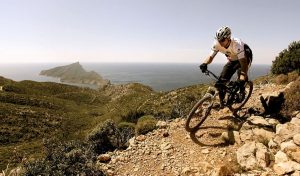
If this tip seems too obvious to be listed first, think about the ramifications of piloting a bike that may be such a bad fit, you hype your chances of being injured big time. Sure, you may have “inherited” a mountain bike because it perfectly suited your budget (it was free), but perhaps you could sell it and use the money as a down payment on a bike that suits your body, style and ambitions. A helpful retailer will advise you on the ins and outs of mountain bike sizing and style—some may even offer budget plans to help you pay for the right bike over time. If you have grand ambitions, he’ll be happy to show you specialized mountain bikes guaranteed to raise your pulse and increase your mountain biking-related dreams.
Tip#2: Pedal to the Mettle
Speaking of pedals, they can mean the difference between a successful mountain biking ride and an unplanned one that lands you on your butt, courtesy of something you never saw coming. Veteran mountain bikers recommend using those pedals to purposely smash into obstacles to “get the lay of the land,” followed by pulling up a bit while aggressively pushing forward at an accelerated rate of speed. When pedaling smooth mountain bike trails, standing on those mountain bike pedals with slightly bent knees, elbows–and pitched a little forward at the waist–prepares your body to absorb daunting bumps without falling or faltering. If you fail to take this practical advice and keep your body rigid as you push those pedals forward wearing your mountain bike shoes and mountain bike shorts, prepare for the consequences! You do wear a mountain bike helmet, right?
Tip #3: Ride with Friends or Ride Alone
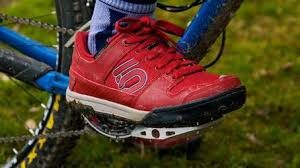
If the mountain bike riders with whom you keep company perform at a variety of skill levels, you’re lucky indeed. Riding and training with others isn’t always listed on “How to better your cycling skills” lists, but this advice should be. Lousy riders teach you what not to do in myriad situations and seasoned cyclists are never shy about offering tips for improvement. You can ask them anything you want to know and most are delighted to speak at length about technique and training. Does this mean you must always ride as part of a pack? Of course not. Turn your children on to the excitement by buying them kids mountain bikes, but if they’re still too young to ride, one of the benefits of riding alone is taking those mountainous trails solo to focus on new skills, improve them and simply enjoy the isolation when Mother Nature is your only companion. That stated, if you jump into a mountain bike competition, being alone allows you to focus on where you are, where you’re going and how it will feel to cross that finish line a winner.
Tip #4: Your Balancing Act
Your Dad may already have informed you that everything about life requires achieving balance and you have multiple opportunities to find yours when you’re charging down inclines, rock faces and other thrill-filled places no timid mountain biker dares to go. Developing solid fore-aft and lateral balance techniques take time and practice if you’re to shift your weight properly so you don’t suffer an unplanned journey that propels you over your handlebars. Counteraction is crucial when executing tight switchbacks as your weight strives to control forward motion, so master compression and release techniques for a fluid, dynamic ride. “Obstacles are for everyone,” insists rocky mountain bikes legend Emily Batty, who has plenty to say about the dynamics of momentum on the trail.
Tip #5: Give us a Brake
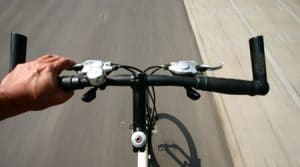
If we failed to include our respect for braking systems on mountain bikes, we would be doing you a disservice. If you can only recall one brake-related cue, make it “use your brakes like dimmers, not light switches.” A demand for sophistication in mountain bike engineering has produced the two-brake system delivering the ultimate in control, but it’s the way a rider synchronizes the use of both brakes effectively that morphs ordinary cyclists into extraordinary ones. Most of your power comes from your front brake. Over-use it while down-hilling and gird your loins for both thrills and spills. Become a card-carrying expert at what mountain bike pros call “feathering” and instances of brake lock diminish. There’s an art to late-braking mastery that requires seasoned and new mountain bike enthusiasts to practice this technique repeatedly, so when you’re forced to react, you do it naturally and forcefully. Has anyone told you that if you re-position your brake levers properly, you only need your index fingers to brake?
Tip #6: Think of Your Bike as Your Child
You’re proud of it, you receive endless satisfaction from it and yes, you’ll have to open your wallet more often than you would if you were “childless.” But it’s no secret that if you don’t take your kid to the dentist, you will have regrets. Think of maintaining your mountain bike in the same way. Frequent inspections only take minutes, yet they can save you from bigger expenses down the road if you attend to problems the moment you detect them. Scan your bike regularly looking for cracks, breaks, scratches, deteriorating metal and blemishes that have the potential to expand if you don’t attend to them immediately. Whether you’re skilled enough in mountain bike maintenance to undertake your own fixes and repairs or you rely on your dealer for his “emergency room” services, attending to problems early is always the best practice.
Tip #7: Set your sights on what’s down the road
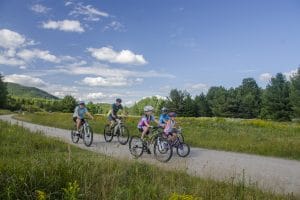
Keen observation skills help you detect trouble on the trail before you reach it, but you’re going to have to learn to shut down your natural propensity for avoiding some obstacles so you’re prepared for the day you can’t! Focusing on the path ahead gives you the equivalent of an early warning system that requires you to make instantaneous judgments, but are you aware of this unwritten rule: “If you focus on the rock you don’t want to encounter, you’ll most definitely hit it”? This self-fulfilling prophecy comes to pass every day. It’s called “target fixation” and it defies logic, so accept it as fact and move on. Looking ahead transcends close encounters of the worst kind because there’s a symbolic component that drives you forward in your quest to become the best mountain biker you can be. By the way, did you know that forward-thinking cyclists tend to be more confident, positive and hopeful about the future? Comes with the territory.
Tip #8: Master the big five
Can it really be this simple? In fact, basic knowledge is like taking core courses in high school. At the time you studied, you had no clue you would use them to your advantage, but if you’re like most of us, that knowledge has come in handy over time. Your first task is to learn to achieve and maintain proper body position. Look at photos. Study other bikers. Figure out what they all have in common and adopt the stances, asking skilled cyclists to critique your position from different angles as you ride. Become adroit at both standing and seated pedaling and once you’re in your zone, move back and forth between both for smooth and fluid transitions on the fly that become second nature. Correctly learn the art of “manualing,” by shifting your weight back and forth using your hips. This fluid movement becomes instinctive over time. Finally, proper cornering, a cornerstone skill, depends greatly on your ability to shift your weight back and forth effortlessly so no corner takes you down.
Tip #9: Engage your mind
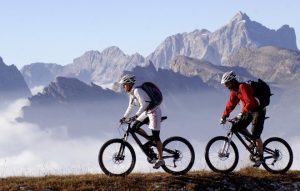
After you’ve become one with your mountain bike and can almost intuit the bike’s “thinking,” it’s time to get your head in gear. One of coolest ways of describing the synchronicity between you and your bike comes down to this great advice: Don’t let the bike smell your fear! Make friends with top speeds. It’s one of the biggest technical riding secrets. Even if your head whines “slow down,” speed is more likely to get you out of tricky situations faster, but stay focused; your braking instincts are likely strong ones. Mind over matter? Of course. By the way, a popular self-help book from the 1980s called “Feel the Fear and do it Anyway” has plenty to say about situations in which fear is either real or imagined. Ask yourself, out loud, what’s really stopping you from doing something challenging on your mountain bike each time you confront a risky situation, Grasshopper.
Tip #10: Ride everywhere
Practice makes perfect. Sure it’s a cliché, but it’s true. Once you’ve taken care of essentials like memorizing bits of advice like “heavy feet; light hands,” and set up your suspension properly so you enjoy the most comfortable, confident ride possible, get into the habit of asking yourself every time you leave the house whether or not your mountain bike can’t replace your gas-guzzling car. Store the bike out of sight and you could forget about it next time you need a grocery store run or you want to get together with friends in another neighborhood. Count your blessings if streets in your area have potholes; there’s no better way to sharpen your maneuvering skills than by using these streets as agility courses. Practice on stairs devoid of human traffic to get a feel for vertical trail blazing. Once you identify opportunities to ride your mountain bike, you may be surprised how fast you improve as you enjoy a bonus of fewer stops at gas stations!
 Mountain Bike Reviewed Best Mountain Bikes Under $1000
Mountain Bike Reviewed Best Mountain Bikes Under $1000

